11th June 2021 – Shabbat is almost here
And today we will listen to the voice of Miriam Kressyn: actress, singer, radio and TV presenter… and a benchmark on the Yiddish theatre.
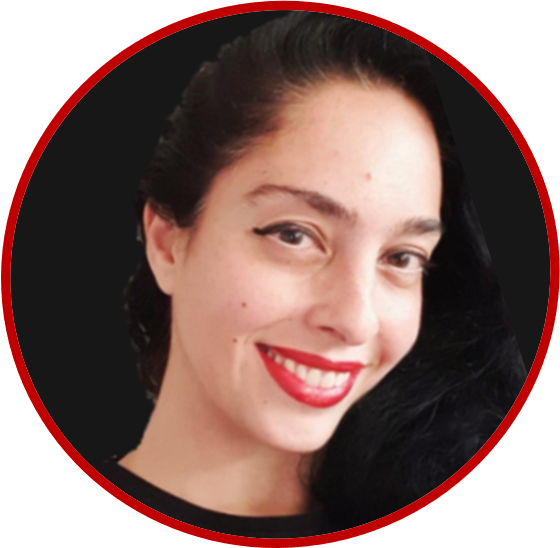
Hello, how are you? In this occasion I am writing this first part after had written all the rest and I am mentally exhausted ?. I just can say I wish you a very nice Shabbat and I hope that in the next edition I will have news about my vaccination. At this moment I don’t have a date yet but in my region, they are already calling my age group. Hopefully I will have that joy in the coming days and, in the meantime, let’s keep enjoying the music!
– REMEMBER THAT Yanky Lemmer has accepted to answer some questions for a future edition of MBS so, if you want to know anything about him, just let me know and I will send him the question. ?
| Share the joy of music and learning with your beloved ones. Share MBS. Thank you in advance. |
| Share this with a friend, right from here |
About Miriam Kressyn
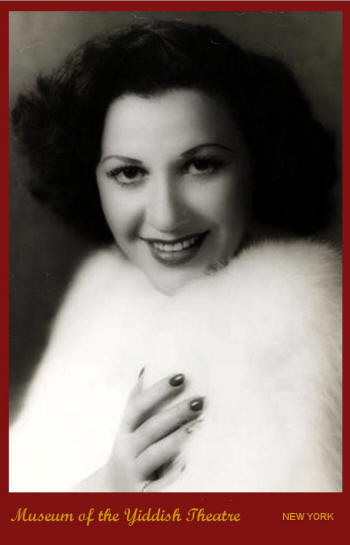
I talked about Miriam Kressyn in a previous edition, the one about Hymie Jacobson and his Orchestra, because Miriam and Hymie were married for some years from 1933. In 1943 she married another man, with whom she would stay the rest of her life: Seymour Rechzeit.
Miriam Kressyn is considered as one of the “First Ladies of the Yiddish Theater”. This, together with the fact that he lived a long life (he died in 1996) until very recently, has made it possible to have quite detailed information. Even so, depending on the source you consult, you will see that he was born in 1910 or 1911.
Some nice biographies I have found of her are the one at the Museum of Family History and the one in the website of the Jewish Women’s Archive. I will make a short summary here:
- She was born on March 4, 1911, in Białystok (nowadays, Poland). Soon she settled with her mother in Orle, near Białystok, where she studied in a secular Yiddish school. Her father emigrated to the USA for some time and returned.
- In 1923, she immigrated to America with her parents. They settled in Boston. She won a scholarship to the New England Conservatory of Music, where she studied for several years.
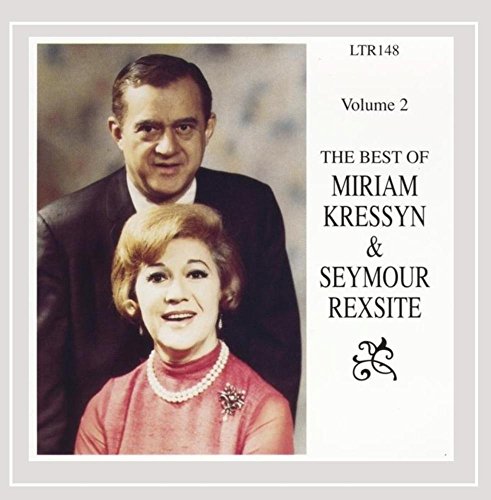 She was “discovered” in the late 1920s by Julius Nathanson and she started to play children’s roles in Yiddish theater.
She was “discovered” in the late 1920s by Julius Nathanson and she started to play children’s roles in Yiddish theater.- In 1930 she became member of the Hebrew Actors Union.
- During the 1930s she toured in Argentina and Europe, including her birth land, Poland, with Hymie Jacobson, with whom she would marry in 1933.
- She returned to USA in 1938.
- She married Seymour Rechzeit in 1943. They performed together many times.
- She worked on radio and on TV with Seymour for 4 years. He produced some music recordings for her.
?You can listen to Seymour with his version of Misirlou here. And if you want to learn more about the iconic song Misirlou, don’t miss a check to the MBS edition about it, here. |
The wonderful Milken Archive has published a good bunch of videos about them. Click the picture to visit the website ?
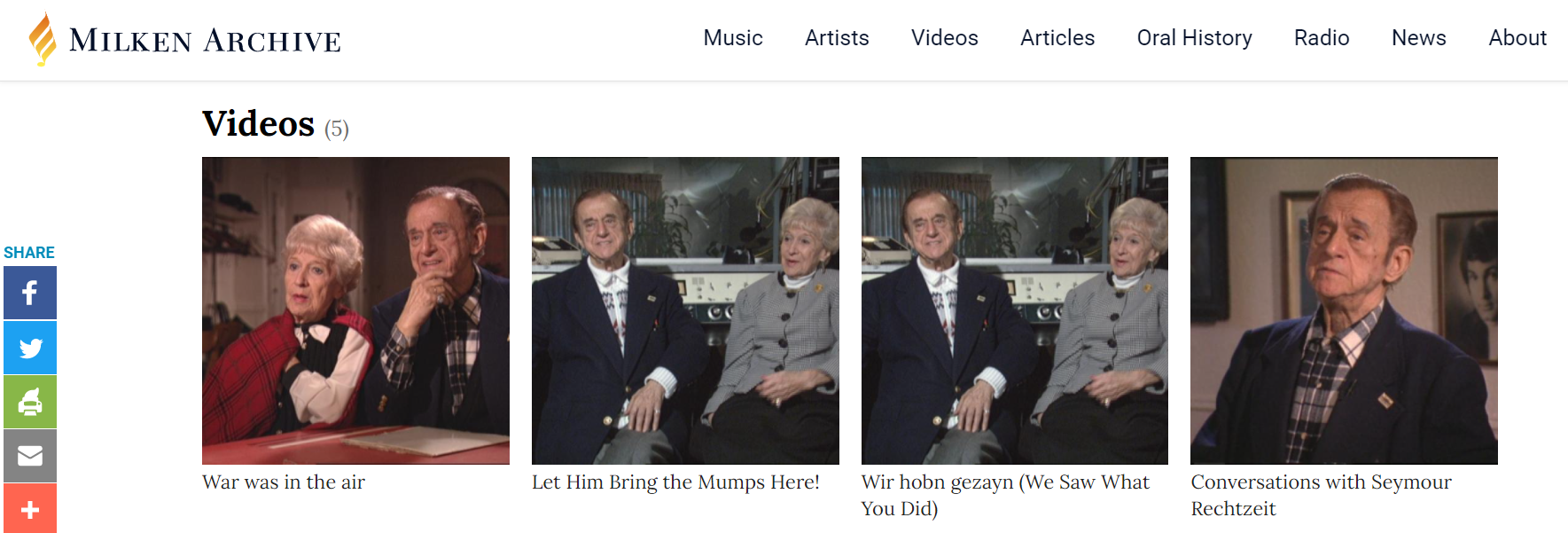
If you search for synagogue in Białystok, three spots appear on Google Maps. This is one of them. Dawna synagoga Piaskower, ancient Piaskower synagogue. I think only a commemorative plaque lets you know that there used to be a synagogue there.
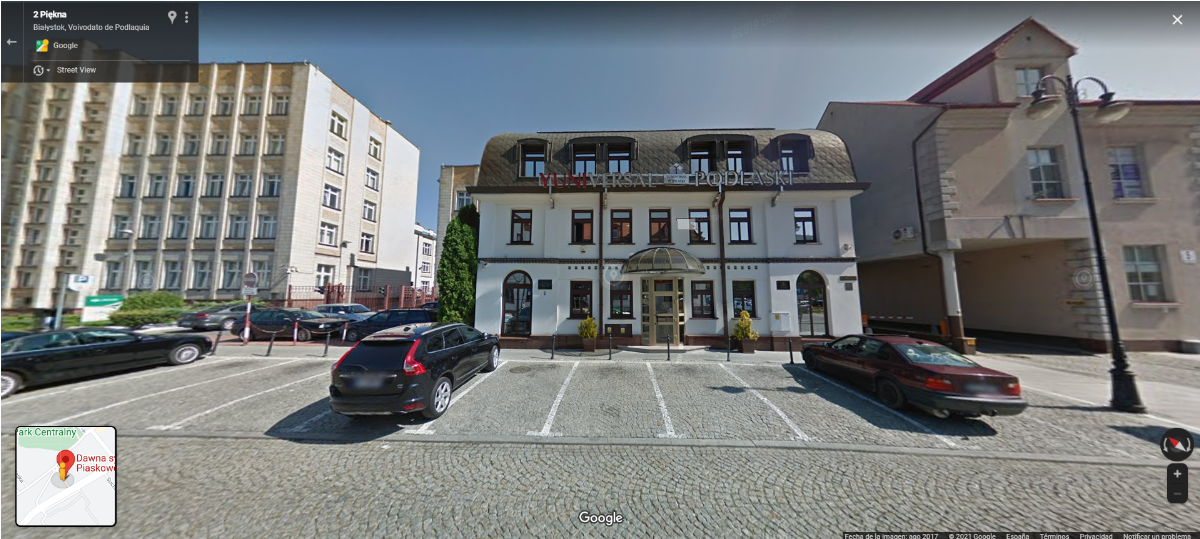
This is another of those spots: Synagoga Cytronów.
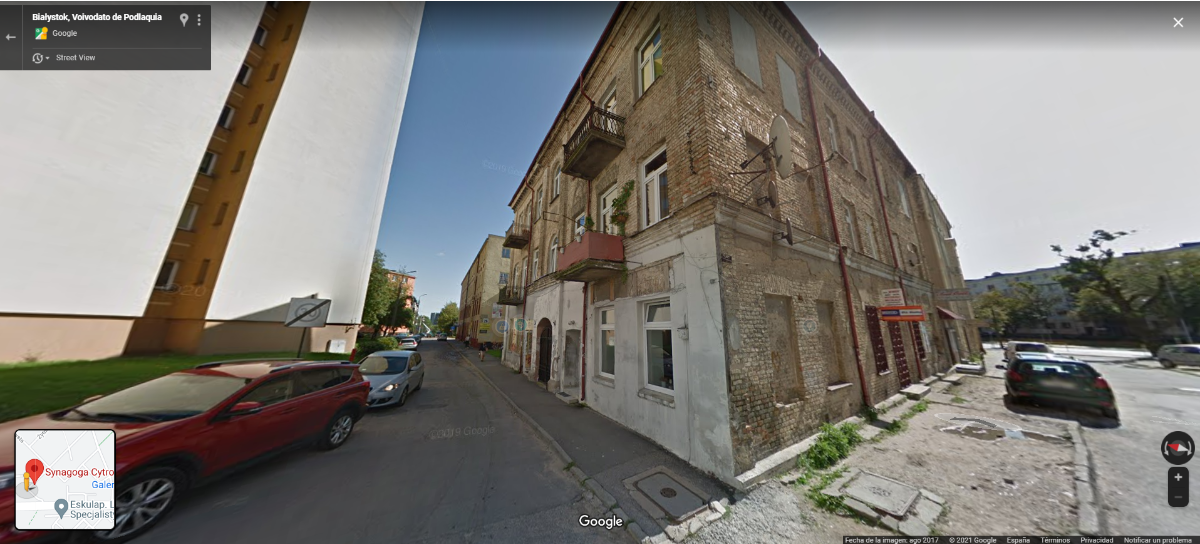
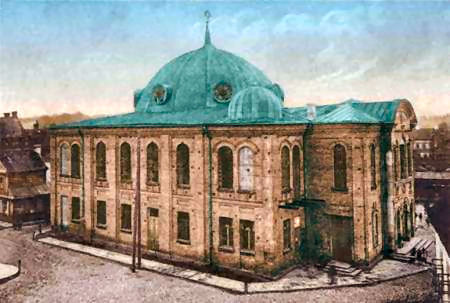
The third spot is the Memorial of the Grand Synagogue, that was burned in 1941 by the nazis. Learn more about this Synagogue, here.
Why do I search for the synagogues in the map?
I just asked myself that question. It is not because I am very religious. Not at all. In fact, I am not even a Jew. The situation of the synagogues, or their non-existence, or the existence of memorials or at least a remembrance of some kind, seem to me to be significant, both of history and of the current presence of Jewish culture in places where it was once a relevant part of society. It is also a way to travel with the imagination to the places of reference for the protagonists of the music, which is the central theme of Music Before Shabbat.
About the music piece Machatenesta
“Machetenesta” is how the song is called in the video in Youtube where I found it. But it took, me some time and a few headaches to find more references, until I found “Mekhuteineste mayne” in YiddishSongsOnline.com. Find the lyrics under the video. You can find these lyrics in several website and in HebrewSongs.com it is mentioned that George Jakubovits of Toronto, Ontario, Canada, transliterated and translated the text. Thank you very much, Mr. Jakubovits, if at any moment you read this words!
The author of the music is Mark M. Warshawsky, a Yiddish folk poet and composer, born in Odessa in 1848, and deceased in 1907 in Kiev. He deserves his own edition of Music Before Shabbat, so he will come back to visit us soon.
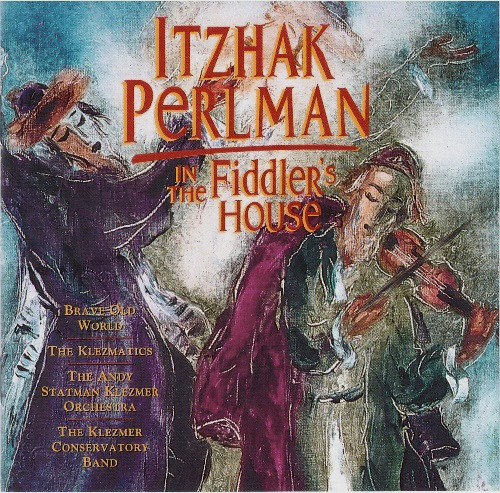 The first time I heard this piece was on Itzhak Perlman’s album In the Fiddler’s House, a compilation of klezmer pieces, played by Perlman, with several of the groups active in the klezmer world in the 1990s. In that album this is called “Wedding Medley” and indeed this track starts with Mekhuteineste mayne and after, there are other tunes. This piece and, in general, the whole album, is an absolute marvel. You can listen to this Wedding Medley, here.
The first time I heard this piece was on Itzhak Perlman’s album In the Fiddler’s House, a compilation of klezmer pieces, played by Perlman, with several of the groups active in the klezmer world in the 1990s. In that album this is called “Wedding Medley” and indeed this track starts with Mekhuteineste mayne and after, there are other tunes. This piece and, in general, the whole album, is an absolute marvel. You can listen to this Wedding Medley, here.
Perlman joined forces with the Klezmer Conservatory Band and the result is a piece full of joy, from the second zero, with the clarinet opening in a glissando, which is already in Miriam Kreysser’s version. That glissando that so closely resembles the beginning of Rhapsody in Blue…
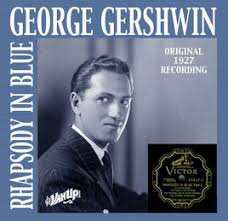 But which came first? George Gershwin premiered Rhapsody in Blue in 1924. By then, Mark Markovich Warshawsky, the composer of the music for Mekhuteineste mayne had already been dead for 16 years. But was that glissando already in Warshawsky’s composition or did the arranger of Kressyn’s recording introduce it inspired by the one in Rhapsody in Blue? Isn’t this a really fascinating question?
But which came first? George Gershwin premiered Rhapsody in Blue in 1924. By then, Mark Markovich Warshawsky, the composer of the music for Mekhuteineste mayne had already been dead for 16 years. But was that glissando already in Warshawsky’s composition or did the arranger of Kressyn’s recording introduce it inspired by the one in Rhapsody in Blue? Isn’t this a really fascinating question?
To answer it, we can check how was the birth of that glissando in Gershwin’s piece and it seems that the truth is that it was not a creation by Warshawsky, neither by Gershwin, but by the clarinetist Ross Gorman! Emma Johnson, Brittish clarinetist, explains this story in her website.
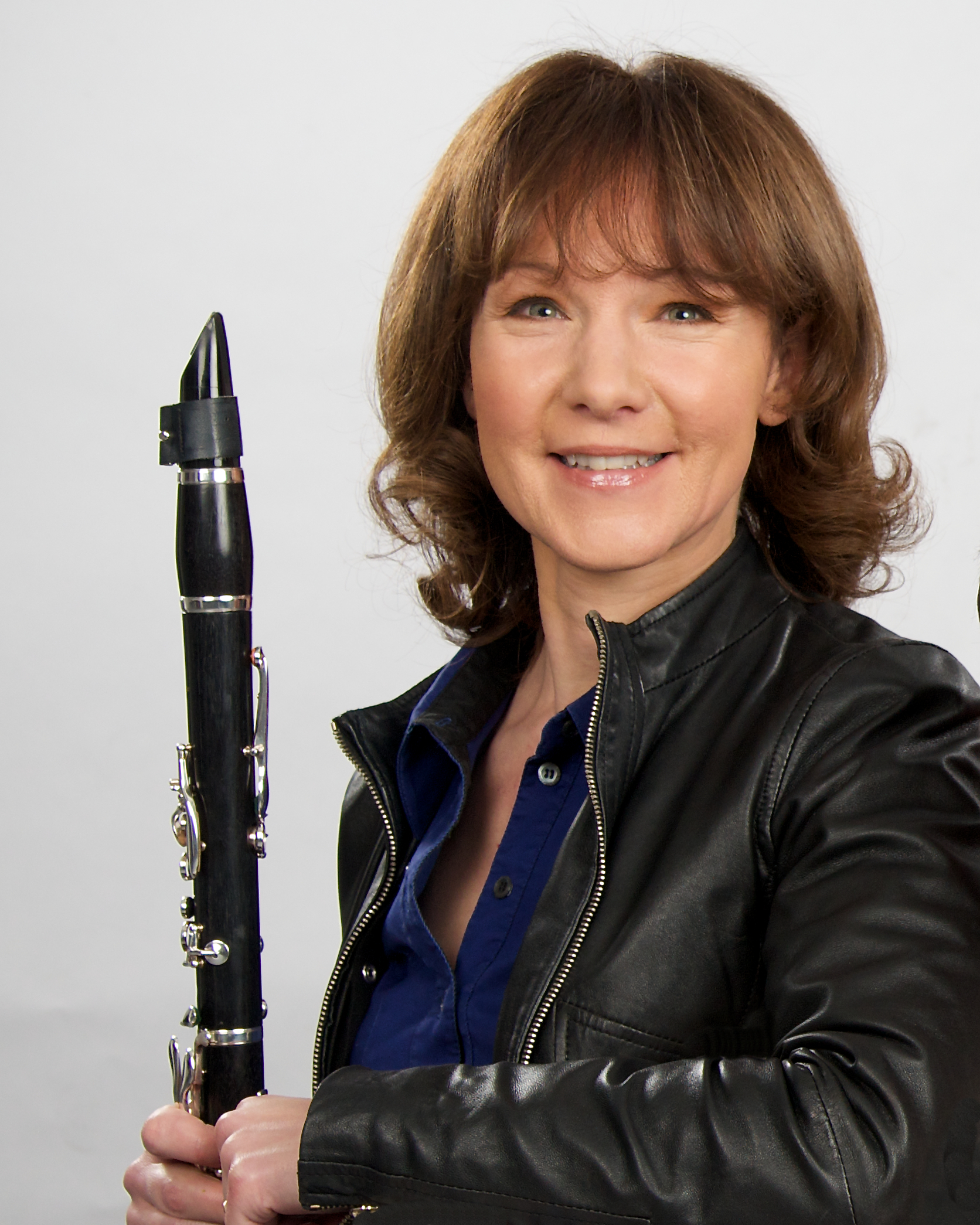 I am really thankful to Ms. Johnson for the generosity of sharing this thrilling information in her website. She is this nice lady in the picture (photo by John Batten). She explains that:
I am really thankful to Ms. Johnson for the generosity of sharing this thrilling information in her website. She is this nice lady in the picture (photo by John Batten). She explains that:
“Gershwin had written a simple scalic run up to a top B flat to prepare the ground for the Rhapsody’s first piano entry but Gorman came to the rehearsal wanting to get a laugh or maybe even to raise the composer’s hackles. He sat down and, instead of playing a scale of precise notes, he did something quite revolutionary for a classical work: a glissando all the way up from the bottom of the clarinet’s range to the top. This technique of sliding between notes and slowly bending and merging pitches until they reach a climactic top note, borrows and extends jazz technique of the time. The effect on everyone present would have been electric. Rather than a look of annoyance from the composer, Gorman’s “joke” met with immediate approval and Gershwin asked Gorman to do the same thing in the concert performance with as much of a wail as possible.”
I always felt that that glissando have a very klezmer flavour and now I’ve just learnt it was done by a not Jew. The referential Brittish journalist Simon Broughton explains in this article for The Guardian about klezmer that in the 1920s:
“Klezmer even enjoyed mainstream success in the US. Perhaps the best known example is the opening of Gershwin’s Rhapsody in Blue (1924), with that rising clarinet glissando evoking the soulful Jewish yearning everyone associates with klezmer. The problem is that Gershwin didn’t write it. Nor was it even played by a Jewish musician. As Henry Sapoznik recounts in Klezmer! Jewish Music from Old World to Our World, the American-born Gershwin, although the son of Russian Jews, had little knowledge of traditional Jewish music and actually wrote a straightforward 17-note scale at the opening of Rhapsody in Blue. It was the (non-Jewish) clarinettist Ross Gorman who improvised the glissando and Gershwin encouraged him to keep it in.”
The mentioned Henry Sapoznik was in Music Before Shabbat in the edition about him and his work of dissemination with his blog and, specifically, his works about Thomas La-Rue. Check it here.
Click the picture to listen to Machatenesta sung by Miriam Kressyn:
| Mekhuteneste mayne, mekhuteneste getraye, Oy, lomir zayn oyf eibik mekhutonim. Ikh gib aykh avek mayn tokhter far a shnur, Zi zol ba aykh nit onvern dos ponim.Mekhuteneste mayne, mekhuteneste getraye, Mayn kind zolt ir nisht fri oyfvekn, Un tomer vet ir zen an avle oyf mayn kind, Vi an eygene mame zolt ir dos fardekn.Mekhuteneste mayne, mekhuteneste getraye, Oyf kinder hobn muz men blut fargisn, Un tomer vet ir zen, az der zun hot lib di shnur, Zol es aykh gornisht fardrisn.Mekhuteneste mayne, mekhuteneste getraye Ikh far tzu aykh mit a parikl Tomer vet ir zayn A shlak a beygzey shviger Iz mayn tokhter oykhet an antikl |
My dear in-law, this is what I want to tell you. Today, we have become relations. I am giving you my daughter for a daughter-in-law. May she not lose face with you.My dear-in-law, this is what I want to tell you. Do not wake my daughter too early in the morning. And should you hear an evil word from her, May you forgive as her own mother would.My dear in-law, this is what I want to tell you. It needs much effort to bring up a child. And if your son looks lovingly at his wife, Do not keep a jealous eye on him.My dear in-law, this is what I want to tell you. I am willing to bet you That if you are going to be an angry, unforgiving mother-in-law. My daughter is quite a brilliant herself! |
| Share this with a friend, right from here |
